Every blogger hits a wall sometimes, but running out of blog content ideas doesn’t have to stop your progress in engaging and growing your audience.
You want to update your blog but can’t find the inspiration. You’ve tried everything to squeeze out every ounce of creative juice, but nothing works. As a blogger, we’ve all been in this situation at least once.
Don’t panic, this is a very common issue than you might think.
This guide is all about bringing new life to your content strategy with exciting, fresh ideas that keep your blog vital for your readers.
Here are 75 ways that will help you generate blog post ideas for your future content.
Content Ideas to Keep Yourself Busy
1. Check Google Trends for Current Popular Topics
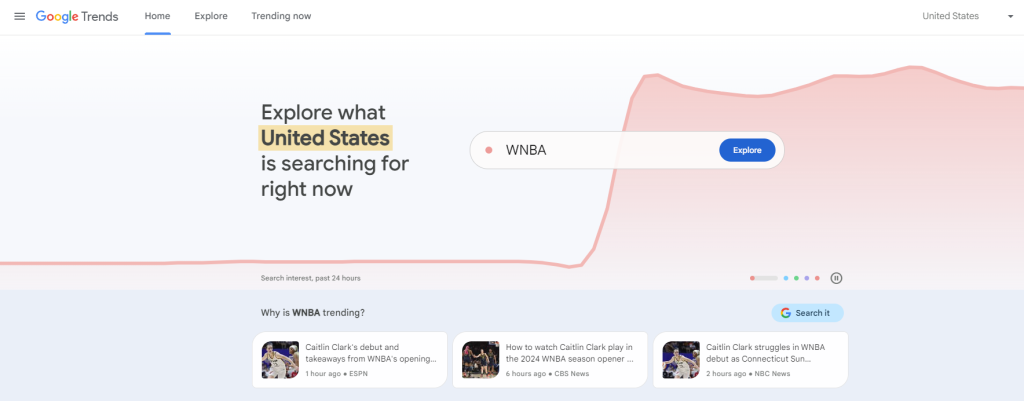
Google Trends offers a live pulse on the topics that capture global attention. With this tool, you can see how certain topics have changed over time and how they perform in different locations.
Say you’re looking for blog post ideas; Google Trends can show you what your audience is curious about right now.
Moreover, Google Trends links searches to real events and stories, thanks to Google’s Knowledge Graph technology. This can help you connect your blog content ideas to what’s trending on platforms like Google News and YouTube.
2. Explore Quora to See What Questions People Are Asking
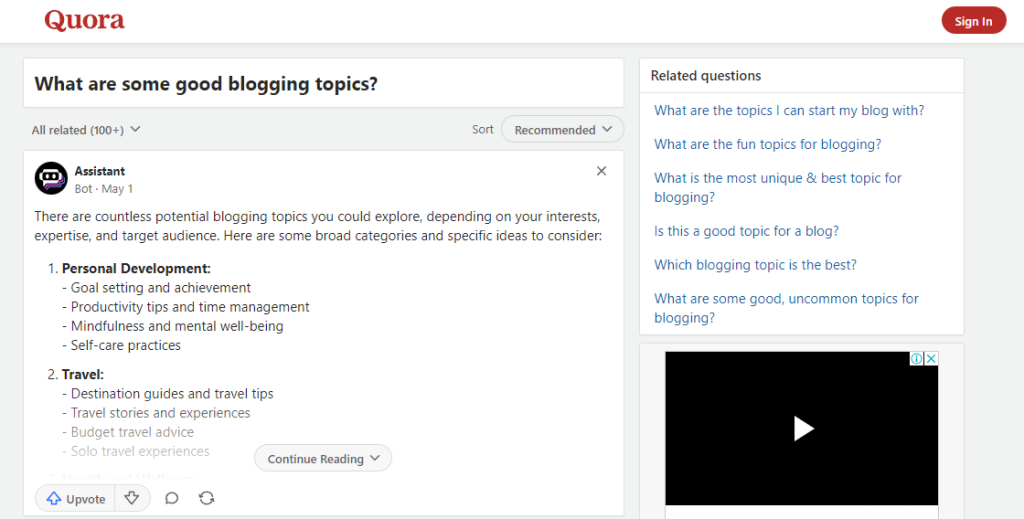
Quora is a website where people from all over the world ask questions about different topics. By exploring these questions, you can find out what topics are currently popular and what your readers are most interested in.
The platform isn’t just about tracking popular trends; it’s also great for identifying unanswered questions or topics that need more information. This gives you a unique chance to write detailed blog posts that address these gaps.
Such blog posts add value for your readers by satisfying their curiosity and establishing your blog as a comprehensive resource.
Additionally, analyzing how people frame their questions on Quora can help you fine-tune your SEO strategy. This can lead to better keyword selection, enhancing the visibility of your blog.
3. Use HubSpots Blog Topic Generator

The HubSpot Blog Topic Generator can be a lifesaver when you’re stuck for blog content ideas. With just a few keywords, this handy tool generates ideas for your blog posts.
Simply type in up to three keywords that match your blog’s focus, and the tool will do the rest. It offers a variety of blog topic suggestions to get your creative juices flowing.
Overall, this tool can be incredibly useful when planning your content calendar.
4. Interview Industry Experts to Share Their Insights
Talking to specialists in your field provides unique and detailed information that you can’t easily find through basic research.
As you engage with experts, they clarify complex topics through their explanations. During an interview, experts often refine their ideas or offer new insights. This process helps you craft content that is both clear and comprehensive, which is highly appealing to your readers.
Moreover, capturing an expert’s authentic voice adds a personal touch that resonates with your audience.
Crafting effective questions is key to a successful interview. Start with broad questions that let the expert introduce themselves and their background. Then, delve into specifics about trends, challenges, or innovations they see in their field. Including questions about their personal experiences or case studies makes your content more relatable and practical.
5. Conduct a Survey and Write About the Results
Surveys let you collect unique data straight from your audience. This gives you insights into what they like and think about various topics. You can use this data to create blog posts that truly speak to your readers’ needs and interests.
Tools like Google Forms, SurveyMonkey, and QuestionPro make this process straightforward. These platforms are easy to use and offer a variety of question types and designs. Plus, their built-in analytics help you make sense of the data you gather.
Writing about survey results also establishes you as an authority in your field. It shows you care about and understand your audience’s opinions.
6. Host a Webinar and Summarize the Key Points in a Blog
Keep in mind that 91% of B2B professionals prefer webinars as their top content choice. After hosting a webinar, you can write a blog post summarizing the key points discussed. This can appeal to those who prefer reading over watching videos.
Interactive features like Q&A sessions and polls during a webinar actively engage your audience. These interactions are valuable sources for blog content ideas, providing insights into your audience’s interests. You can use this information to create targeted blog posts that address specific questions or themes from the webinar.
If you’re new to hosting webinars, platforms like GoToWebinar, Zoom, and WebEx offer the necessary tools for a smooth experience. These platforms provide high-definition video and interactive capabilities that can boost audience participation.
7. Review a Product Relevant to Your Niche
Did you know that 95% of customers look at online reviews before making a purchase? Product review blogs allow you to share your genuine experiences and in-depth reviews of products that your audience is interested in.
To begin a product review, choose the factors most relevant to the product and your audience. Concentrate on elements like value for money, ease of use, customer support, and features.
Including high-quality images or screenshots is crucial for making your review visually appealing and informative. You can also add reviews from other customers to provide additional perspectives and support your evaluations.
8. Write a How-to Guide Based on Questions You Frequently Receive
A good how-to guide follows a structured approach, making it easy for readers to follow. Start with an introduction that outlines what the guide will cover and why it matters. This sets the context and prepares readers for what’s to come.
The body of the guide should break down the process into clear, manageable steps, using simple language for clarity. Including visuals like images or diagrams can significantly enhance understanding, especially for more complex tasks.
End your guide with a conclusion that summarizes the main points and suggests next steps or additional resources. A call to action, such as inviting comments or sharing the guide, can increase engagement and spread the word about your content.
9. Create a Listicle of Useful Tools or Resources
Listicle as a blog format breaks down information into easily digestible parts, making them perfect for readers who appreciate clear and concise data.
On average, list posts receive 203% more shares than infographics and “how to” pieces. They cater to individuals with shorter attention spans by organizing content into numbered or bulleted lists that are easy to scan.
To craft an effective listicle, first, make sure your topic is suitable for a list format. Begin with a compelling title that includes numbers to draw more clicks, and structure your content by numbering each item to show progress as readers scroll through your list.
Consider linking to more detailed resources when a list item warrants deeper exploration. This approach helps keep your listicle concise while offering paths to more in-depth information.
10. Share a Personal Story or Experience That’s Relevant to Your Audience
People feel a closer bond with bloggers who aren’t afraid to share their personal journeys. Readers see a more relatable and human side of you when you open up about your own experiences.
When picking stories to share, choose ones that fit your blog’s theme and emotionally connect with your audience. If your blog is about personal growth, talk about times you’ve faced fears or achieved important goals.
But remember, while it’s good to be open, it’s also important to keep your stories suitable for all audiences. This helps maintain your blog’s professionalism.
11. Repurpose Old Content with Updated Information
To refresh your blog without starting from zero, you can repurpose old content with updated information. It saves time and resources while breathing new life into your previous posts.
Think about converting an old blog post into a video or an infographic. This change can attract a different segment of your audience who prefer these formats. Maybe someone who skips over text will stop and watch a video.
Regular updates also mean your readers always have something new to discover, even in older posts. Plus, adapting your posts for different platforms can dramatically increase their visibility and effectiveness.
12. Use SEO Tools Like Ubersuggest to Find Popular Keywords
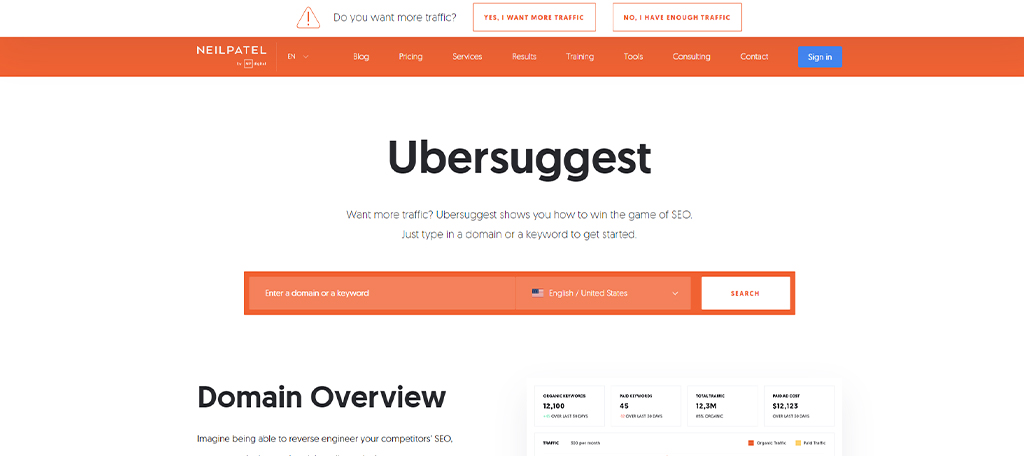
SEO tools like Ubersuggest help you find out what your audience is searching for online. With this info, you can generate blog content ideas that match their interests and improve your site’s visibility.
Here’s how it works. You enter a keyword into Ubersuggest, and it shows you related terms people are looking for. It also tells you how often these keywords are searched and how hard it might be to rank for them.
To make it easier for your blog to rank, you can choose keywords that are popular but not too competitive.
13. Write About Recent Events or News in Your Industry
When you write about recent events or news in your industry, your content serves as a prime resource for readers seeking the latest insights. As news unfolds, your blog becomes a hub for fresh information.
To do this, start by monitoring key news sources and industry journals that align with your blog’s focus. Then, bring a unique angle to these stories. Adding your own analysis or viewpoint makes your posts stand out.
Remember, timely response and active engagement are crucial. Aim to post about recent happenings quickly while they are still relevant to the public.
14. Explore Competitor FAQs and Offer Your Own Take
Competitor FAQs can be a goldmine for new blog content ideas. When you check out the questions they address, you learn what your potential readers are curious about.
You can then spot opportunities where your competitors might not have given detailed answers, and you can jump in to fill those gaps.
Once you’ve checked what your competitors are discussing, take your unique angle on those topics. Maybe there’s a recent update they’ve missed, or perhaps you have a different experience that could lead to alternative solutions.
15. Curate Content and Share Your Thoughts On It
It’s tough to always come up with new ideas and even tougher to execute them well. Curating content helps you keep a regular posting schedule, keeps your audience engaged, and saves the time and money you would spend on creating new posts.
It’s also a great way to react quickly to new trends, making sure your blog stays relevant and up-to-date.
By adding your own analysis or commentary, you transform the curated pieces into something unique. As you mix curated content with your original posts, your blog becomes a rich resource that draws readers back time and again.
16. Cover Industry Conferences or Events, Even if You’re Not Attending
You can tap into the latest industry trends and share developments with your readers by covering events or conferences.
Social media is a treasure trove of real-time updates from these events. Platforms like Twitter are often buzzing with event hashtags, providing snippets of key discussions and highlights. This stream of information can be as valuable as attending the event in person.
Also, many conferences offer live streaming or post-event recordings of their sessions, making it possible to catch every detail from afar.
17. Look at The Most Popular Posts On Social Media in Your Niche
Posts that have gone viral on social media can help you generate blog content ideas.
Keep an eye on influencers and competitors who often lead the way with new trends and can give you more ideas. They tend to bring up new topics and viewpoints that you might not have thought about.
Aside from giving you a steady stream of blog content ideas, these popular social media posts also keep you up-to-date with the latest happenings in your niche.
18. Check Your Blog’s Comments for Any Questions or Topics to Expand On
Your readers often share their thoughts or ask questions in the comments section of your blog, giving you clues about what they’re interested in or what might be confusing them. You can then write new articles that address these topics.
To include a comments section, the process varies depending on the platform you’re using. For instance, on WordPress, you can turn on comments in the ‘Discussion’ settings, where you can also manage how they’re shown.
Interacting with the comments on your blog helps build a community and also provides you with valuable ideas for your future content.
19. Collaborate With Other Bloggers or Influencers
Working with other bloggers or influencers is a great way to generate new blog content ideas and reach more people. When you partner with influencers who are popular in your area, you can connect with their followers, possibly attracting new readers to your blog.
To start a collaboration, find influencers whose audiences match or complement your blog’s focus. Offer them a clear plan that explains what both of you would gain from working together.
Aside from writing guest posts for each other, you can also host webinars together, or be present on each other’s social media posts.
20. Write Seasonal Posts Tailored to Upcoming Holidays or Seasons
Seasonal posts take advantage of the higher interest and online traffic that come with these times. So creating content that aligns with these seasons helps to deeply engage your audience since they’re already interested in these themes.
The ideal times for these posts depend on your blog’s focus and your audience. For instance, retail blogs might see more traffic during Christmas or back-to-school periods, while travel blogs could do better with content about summer vacations.
Planning ahead is crucial for producing effective seasonal content. Tools like Google Trends can help you identify when interest in certain topics is starting to grow, which allows you to plan your posts for the best possible impact.
21. Join Social Media Groups
Social media groups are bustling with discussions, questions, and answers that can kick-start your creativity. Taking part in these conversations helps you find out what topics people are discussing, which can lead to blog posts that appeal to more readers.
Being active in these groups helps you learn what your potential readers are worried about or need help with. You’ll notice that members often discuss the problems they encounter, which can inspire you to write posts that provide solutions.
Moreover, the feedback and interactions in these groups can help you improve your posts to better meet your readers’ needs.
22. Use Netvibes

Netvibes is a great tool for gathering content. You can use it to track various keywords across multiple platforms.
For instance, if you’re interested in “fitness,” you can set up your Netvibes dashboard to monitor this keyword on search engines, YouTube, Twitter, and blog RSS feeds. The best part is that even the free version of Netvibes is very effective.
This tool is perfect for anyone needing to stay updated on specific topics without manually checking different sources. It automates the process, saving time and ensuring you never miss important updates related to your interests.
23. Direct RSS Feeds from Websites
RSS feeds, though not as trendy as in the 2000s, are still widely used by many websites.
RSS feeds are used for syndicating web material. When a website updates with new content, the RSS feed automatically sends this new information to subscribers.
You can use an RSS feed reader to gather content from various blogs and websites to keep up with what others are producing, especially if you follow industry-leading influencers.
24. Write About a Misconception in Your Industry
Misconceptions are everywhere, and addressing them not only clears up confusion but also positions you as an expert in your field.
For example, in the fitness industry, a common misconception might be that more exercise is always better. You could write a post explaining the importance of rest days for muscle recovery and overall health.
Addressing misconceptions can also lead to a deeper engagement with your readers. They might come with their own beliefs or experiences and discussing these openly can lead to lively discussions and debates.
25. Insights from People You Follow on Social Media
Did you know that there are 4.8 billion social media users worldwide? If you’re active on social media and follow other people, there’s a reason you chose to follow them. You might be a fan of their work or just enjoy what they post.
These individuals can inspire you with blog content ideas. So pay attention to what kind of content they are posting.
When you use this approach, you’re tapping into a ready-made audience interested in similar topics. It helps in growing your blog’s reach by engaging with an audience that already shows interest in related subjects.
26. Insights from People Who Follow You on Social Media
A while ago, we mentioned checking out posts of those people you’re following on social media. Now, it’s time to shift your focus to your social media followers.
It’s important to know your readers well, and social media is all about connecting with your audience and engaging them in conversation.
You can analyze what posts your followers interact with the most or even ask them a question directly. Then, you can write a blog post based on their responses.
27. Hashtags Searches
Using industry-related hashtags can be very helpful for coming up with blog content ideas. These hashtags often lead you to active discussions where you can find popular buzzwords and questions.
You can also find inspiration in the articles commonly shared under these hashtags. Observing what gets shared can give you ideas about what topics are trending and what your audience might be interested in.
Exploring these hashtags not only keeps you up-to-date with the latest industry trends but also helps you create content that resonates with your readers. This way, your blog remains relevant and engaging in your niche.
28. Using Portent
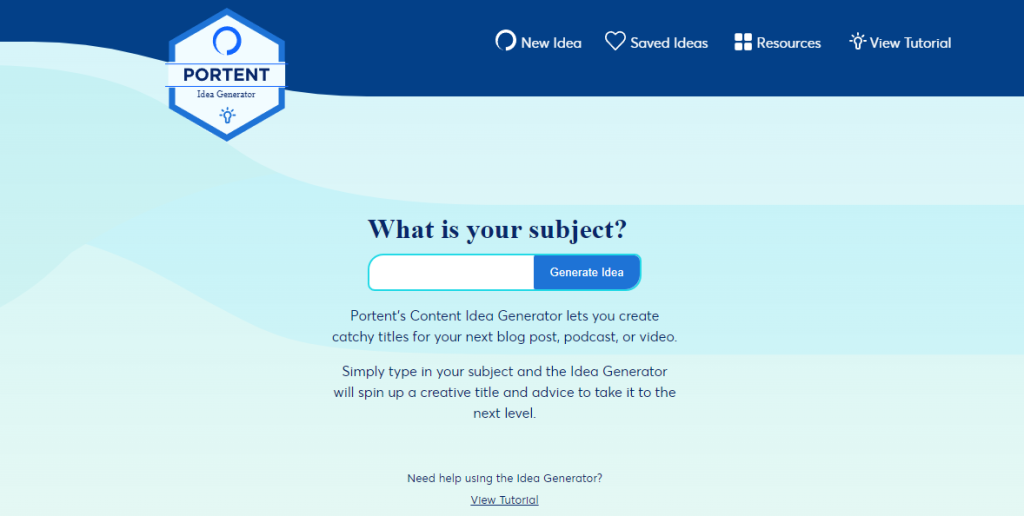
Portent’s Content Idea Generator is an excellent tool for bloggers struggling to come up with new blog content ideas. When you input a topic, the tool provides creative and catchy blog title suggestions, sparking ideas for entire posts.
The tool works simply: you enter a subject into the generator, and it spins out potential blog titles along with tips to develop them into engaging posts. This process can also inspire unique angles on common topics.
For example, typing “sustainability” might generate a title like “11 Things You Don’t Want to Hear About Sustainabilities,” offering a fresh take on a popular issue.
29. Inspiration from Youtube Videos
YouTube is more popular among 18 to 49-year-olds in the United States than any cable network. The platform features videos from nearly every industry imaginable.
This makes YouTube a rich source of content that can be a blog topic idea generator. Watch videos related to your industry and see if any ideas stand out for your next blog post.
By converting interesting video content into blog posts, you can provide your readers with information in a format they might prefer or find more accessible. Doing so also allows you to tap into topics that are current and engaging.
30. Using Instagram
In the US, 75% of people aged 18-24 use Instagram. Knowing this, you can leverage Instagram to target the specific demographic for your blog content ideas.
Look into the top Instagram influencers in your industry to see if you can find any content to expand on.
It can also be useful to answer questions from people who follow these influencers. Engaging with an influencer’s followers by addressing their queries can increase your visibility and establish your authority in the field.
31. Use Google News Search
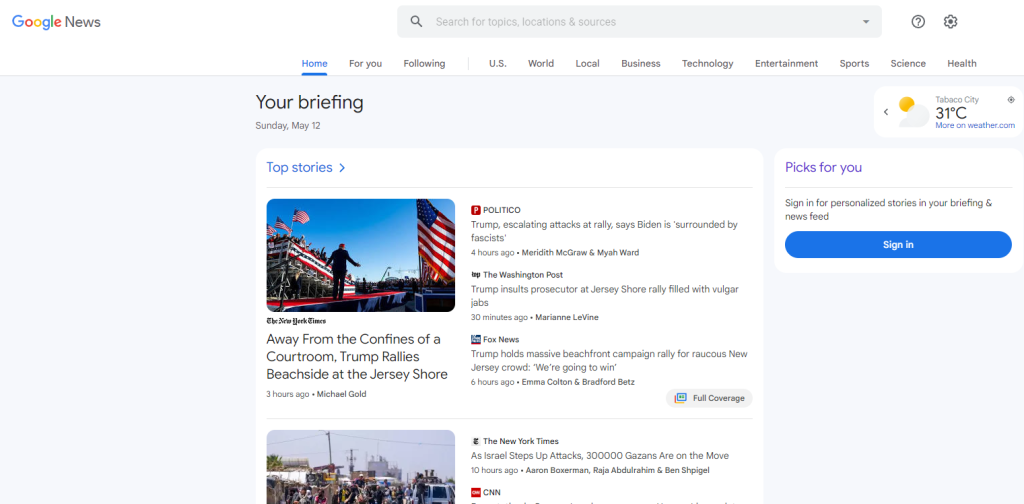
Using Google’s News search feature is very useful for finding the latest topics in your industry. It includes sources that update frequently, often within minutes of new content being posted.
With up-to-date information, you can stay on top of industry changes and important events as they happen. Writing relevant blog posts that reflect the latest trends and developments then becomes easier with Google News, making it an effective article idea generator.
Ultimately, being quick to publish content on recent developments can set your blog apart as a go-to resource for timely information.
32. Making Use of Business Announcements
Many businesses create blog posts out of announcements to engage with their audience. These announcements can include new products in an eCommerce store, upcoming sales and discounts, or news that directly affects the business.
Any announcement that might interest a blog follower can be great for generating content, as it keeps the audience informed and connected to your business.
When you regularly update your blog with relevant announcements, you can keep your followers excited and looking forward to what’s next.
33. Explain How to Use a Popular Product in Your Niche
Explaining how to use a popular product in your niche can be a highly effective way to generate blog content, especially when you’re searching for fresh ideas.
For instance, if your niche is technology, you could write a detailed guide on how to use the latest smartphone features.
Using clear, step-by-step instructions can help make your content more accessible and easier to follow, which is particularly appreciated by those who are new to the product.
34. Using Google Search Console
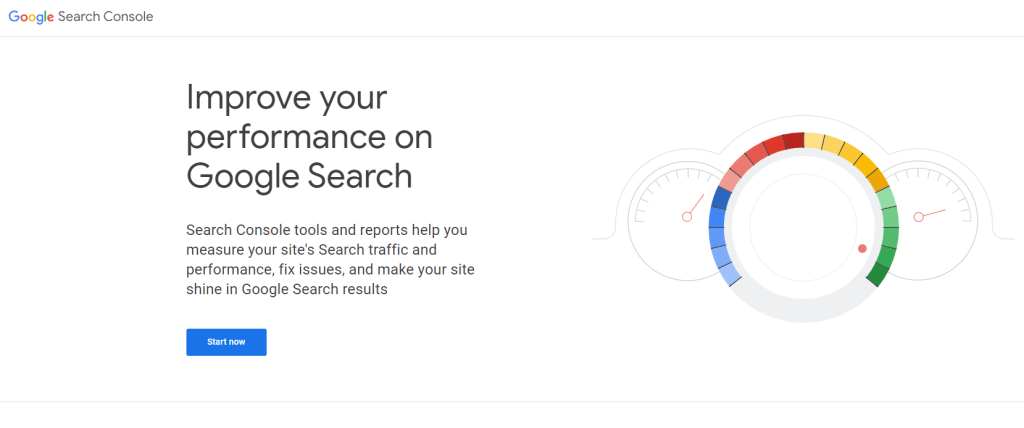
The Search Analytics section of Google Search Console provides a list of keywords related to your content. If you switch the view to “Impressions,” you can see the terms people use to find your site.
Could you think of ways to use these search terms to attract more visitors? Of course, your strategy will depend on the specific content you offer.
To make the most of these search terms, you can use them to generate blog content ideas. Consider creating new articles or updating existing ones to better match what people are searching for.
35. Google Autocomplete Search
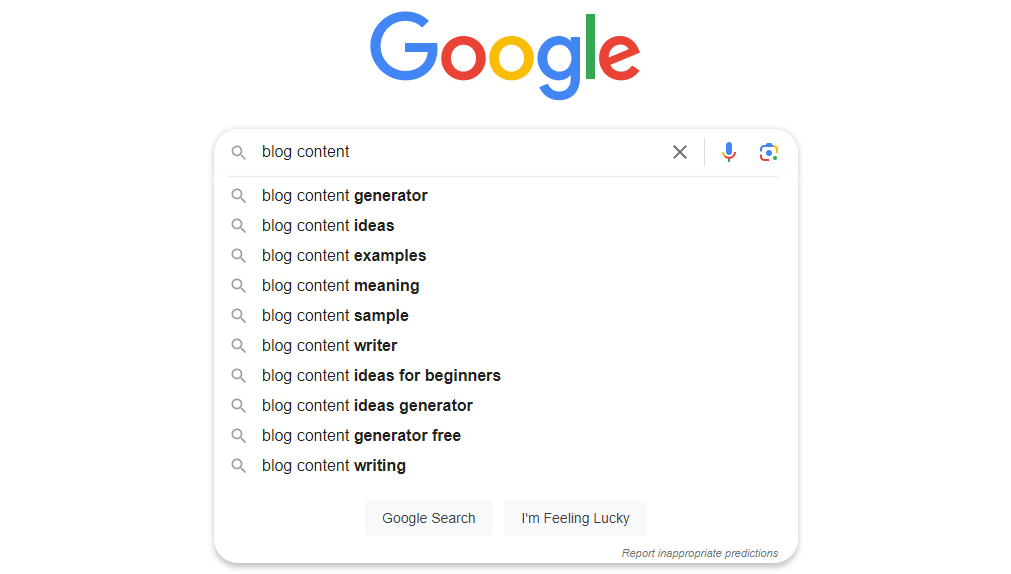
Google is a powerhouse among search engines with around 91.47% market share in search traffic. Its autocomplete feature is often funny, but it can also be a great tool for coming up with blog content ideas.
By simply starting to type a question into Google, you’ll see autocomplete suggestions pop up. These suggestions reflect what people are frequently searching for, providing you with insights into popular topics.
You can use these autocomplete suggestions to gather ideas for your blog posts.
For example, if you type “How to fix a” and see a list of common problems people are trying to solve, you can write a blog post offering solutions to one of these issues.
36. Google Related Results
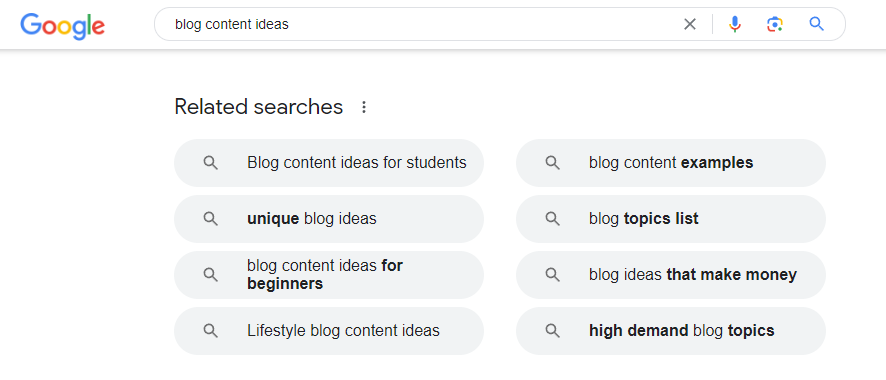
The autocomplete feature isn’t the only way Google directly helps with blogging ideas.
In fact, the related search results at the bottom of the first page are eye-openers as well.
This list is usually about eight titles that are relevant to the topic based on user interest and contextual words. It’s also helped many create viral content.
37. Being Controversial
Creating controversy isn’t for everyone, but it can quickly grab attention from both sides of an argument.
You should know that controversial content might turn some people away. However, it could also make others feel a stronger connection to your brand.
When using controversy, it’s important to weigh the risks against the benefits. Ensure the topic aligns with your brand values and consider how it will affect your audience’s perception. This approach can foster engagement and discussion, but it should be used wisely to avoid long-term negative impacts.
38. Subscribing to Newsletters
I subscribe to many newsletters from different industries. They’re a great way to stay informed about topics I’m interested in and can also be an effective blog generator.
Newsletters are valuable whether you want to improve your knowledge or just find something interesting to write about. So as a blogger, you shouldn’t overlook them.
Subscribing to these newsletters can save you time in research, as they often summarize the most important news and trends.
39. Google Alerts
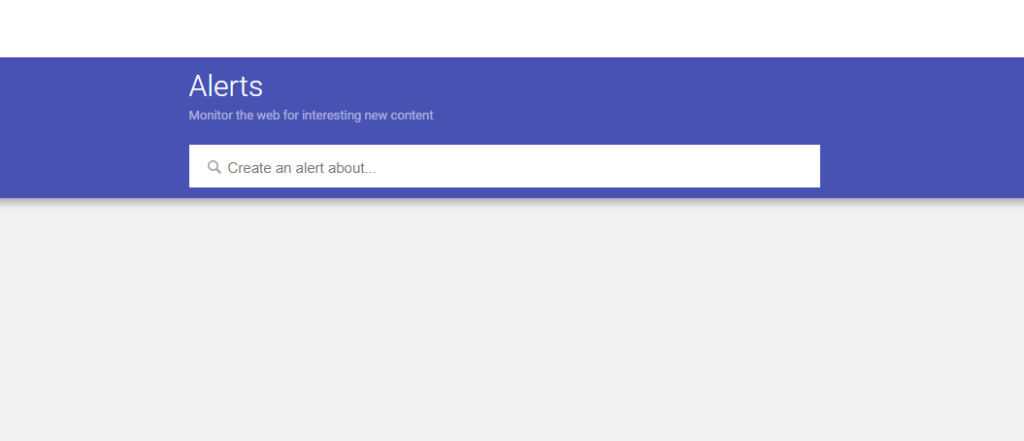
If you want to receive news about specific topics right when Google finds them, use Google Alerts.
You can set up alerts by choosing keywords, and Google will email you whenever new content is published related to those keywords. Many businesses use this to track mentions of their brand.
This service can help you with blog content ideas by keeping you informed about relevant updates in your field.
40. Statistics within the Industry
The internet offers a wealth of statistics covering various industries. These numbers can be very useful when you’re coming up with blog content ideas.
Many people use these statistics to create infographics, but presenting them in text form is also effective for engaging your audience.
Using statistics in your content not only backs up your points with data but also increases the credibility of your articles. Whether you opt for visuals like infographics or stick to text, incorporating relevant data helps make your content more informative and appealing.
41. Discuss the Intersection of Different Industries with Yours
Exploring the intersection of different industries with your own is a creative way to generate blog content ideas.
For example, if you work in the technology sector, consider how tech innovations are transforming traditional fields like education or healthcare. Discussing topics such as e-learning tools or telemedicine can also attract readers from both tech and these intersecting sectors.
Another approach is to examine trends in a complementary industry that affect your field. A financial blogger, for instance, can explore how economic changes influence consumer technology spending.
42. Ahrefs

Ahrefs is a comprehensive marketing tool that significantly enhances your blogging efforts. Aside from analyzing data and helping with keyword selection, it also includes a content research platform that identifies the most shared content.
Using Ahrefs can help you understand what topics are currently popular and how well different websites perform, which can guide you in creating content that is more likely to attract and engage your audience.
Overall, this tool helps you stay competitive by providing insights that inform better content decisions.
43. Compare and Contrast Two Popular Products
This type of post helps your readers make informed decisions by highlighting the strengths and weaknesses of each product.
For example, a product review blogger can compare the latest smartphones from Apple and Samsung, focusing on features like battery life, camera quality, and user interface. The article serves two ways: to guide potential buyers and attract traffic from fans of both brands.
Additionally, comparison articles encourage interaction and discussion among your readers. People love to share their opinions and experiences with products, so a well-crafted comparison article can lead to lively comments and debates.
44. TikTok Challenges
To connect with the younger generation, consider that 47.4% of TikTok’s users are under 30. This platform is more than just a place for entertainment; it’s a valuable resource for identifying trends that can be turned into engaging blog content.
Keeping an eye on popular challenges and topics on TikTok helps you understand the interests of a younger audience.
For example, the #BookTok challenge, where users creatively recommend books, could lead to a series of blog posts about literary trends, book reviews, or in-depth explorations. These posts would cater to avid readers who crave more detailed discussions than what a short video can provide.
45. Tweak Your Biz
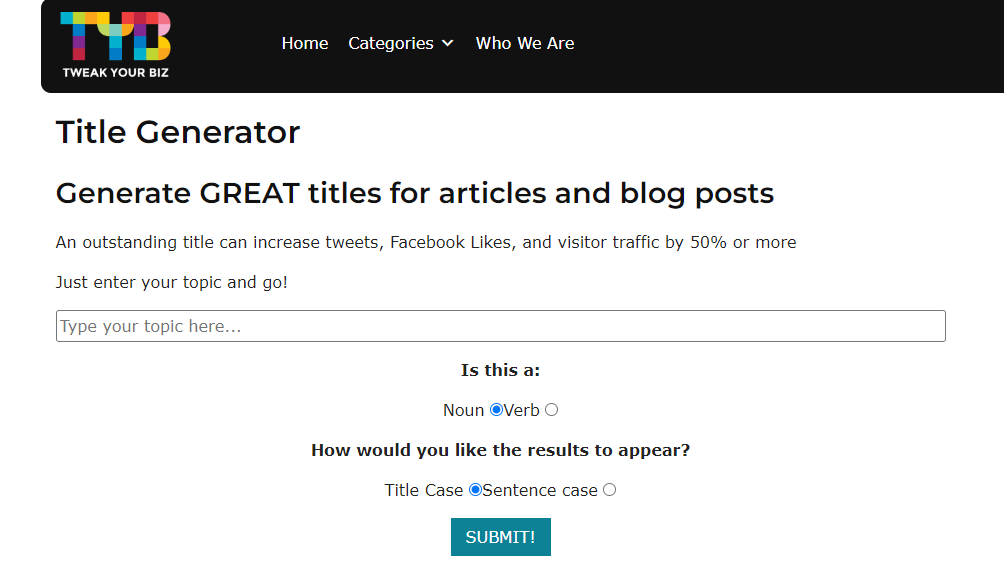
The Tweak Your Biz Title Generator takes your noun or verb and turns it into many possible titles for your blog. It offers ideas for over 10 different types of blog posts, giving you more than 100 options to choose from.
While some titles might need a bit of grammatical tweaking, it’s a quick way to spark new blog content ideas.
This tool is especially useful when you’re stuck or looking to diversify your content. By generating a variety of titles, it can inspire you to explore topics or formats you might not have considered before.
46. Use Trello
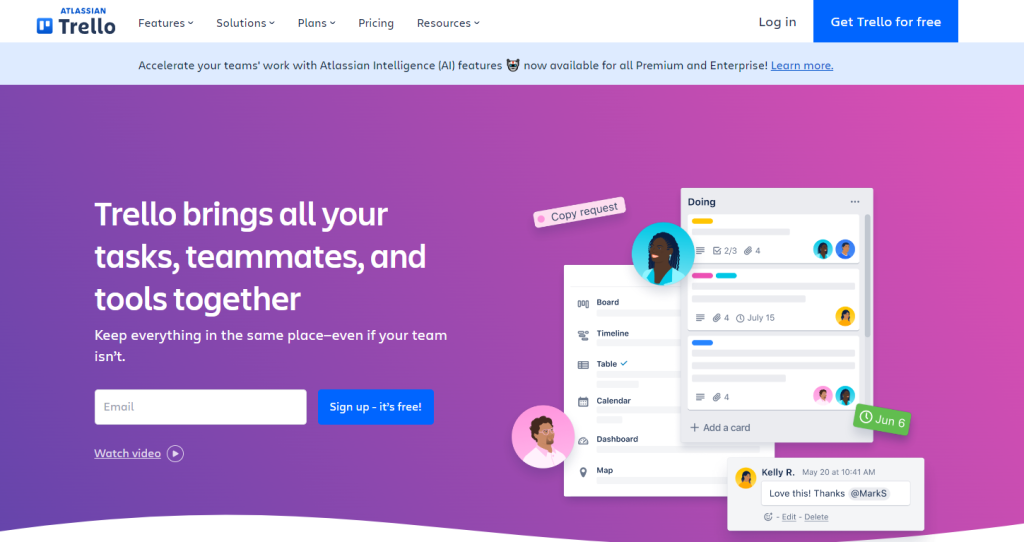
Sometimes, your mind can’t generate blog post ideas because your workplace is just too cluttered with many things. And that includes your digital workspace.
Trello is a project management tool that lets you create boards, lists, and cards to organize tasks and ideas effectively. You can set up a board specifically for blog content, where each list represents a different stage of the idea process, such as Ideas, Researching, Writing, and Publishing.
This method helps you keep track of all your ideas and see which ones need more attention or are ready to move to the next phase. It’s particularly useful when you’re working on multiple posts at once so that nothing gets lost or overlooked.
47. Using Social Sharing App Data
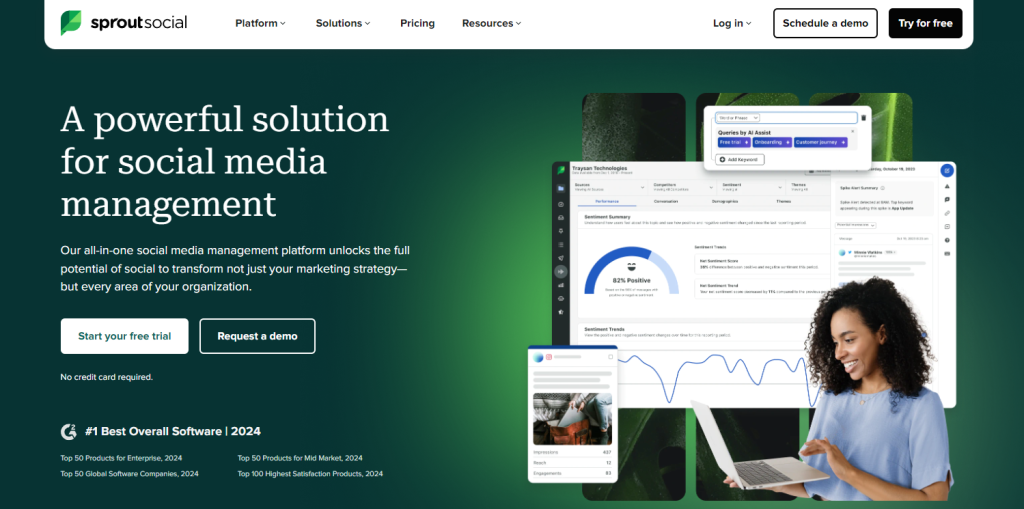
Social sharing tools like Sprout Social and Buffer make it easier to distribute your content. They also offer analytics that can help you find new ideas when you’re unsure what to write about.
For example, you can check which topics get the most interaction from your followers on social media.
Using this data lets you understand what your audience likes and engages with the most. This can give you a good starting point for your next blog content ideas.
48. Google Forms
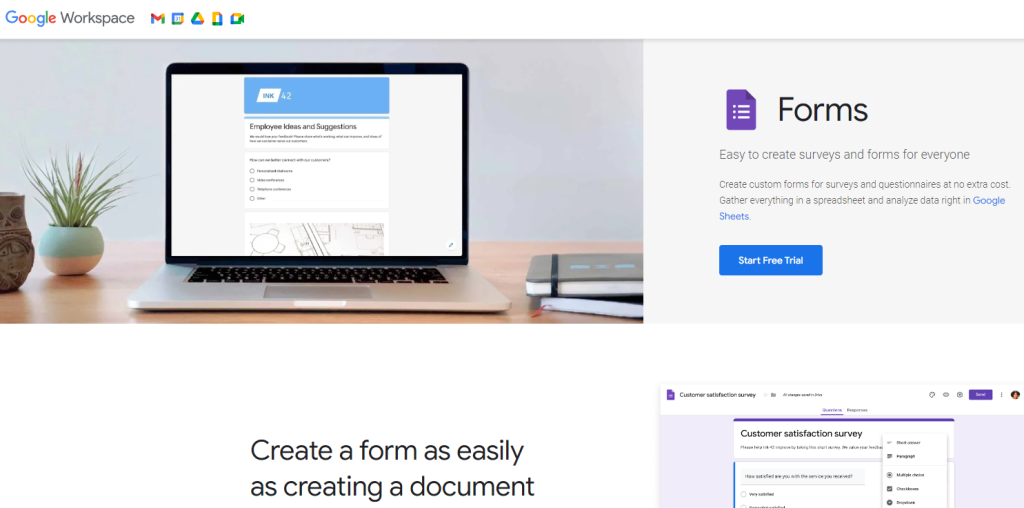
Google Forms is a tool that helps you collect responses to your questions from users across Google’s network. You can directly ask your readers about their interests or any questions they might have.
This tool also lets you explore in detail what your readers like or dislike about your blog. By asking questions about previous posts, you can figure out which topics were hits and which ones missed the mark.
Another benefit of using Google Forms is that it can help you spot trends in what your readers are saying. If several readers show interest in a specific topic or mention a common issue, it could inspire you to write a series of posts or a detailed guide on that subject.
49. Create a Case Study
Case studies make your content feel more personal and provide real, practical information about experiences.
However, they can be time-consuming to put together, depending on the depth of study you’re aiming for. They are often focused on data and include factual details about the process.
Using case studies in your blog also helps your readers understand how theories apply in real-world scenarios. It significantly boosts the credibility and relatability of your content, encouraging readers to engage more deeply with your work.
50. Blog Directory Sites
Many bloggers use platforms like Bloglovin to increase traffic to their sites. These platforms can also be a great source for blog content ideas within your niche.
By exploring other blogs on these platforms, you can discover some unique ideas for your own blog.
This can also be a good way to find lesser-known content, as many of these sites aren’t widely recognized.
51. Google Keyword Planner
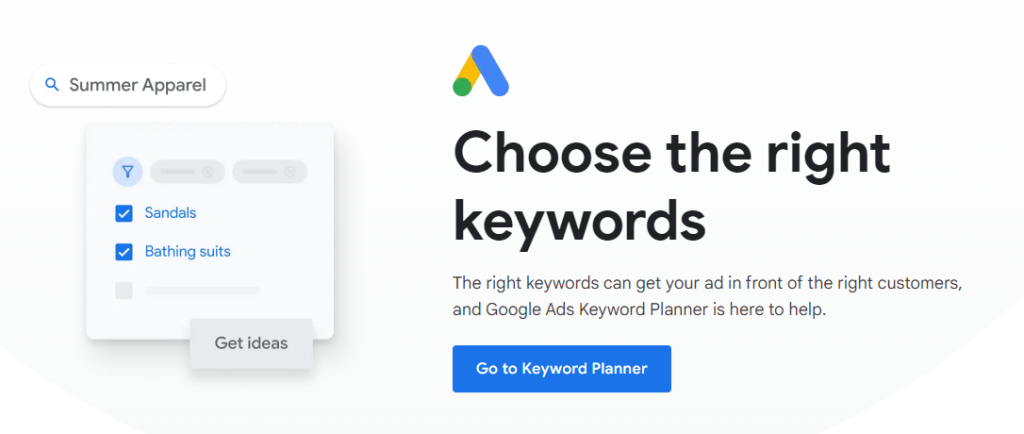
The Google Keyword Planner is widely used by a lot of people when developing their marketing strategies. It’s also helpful for finding blog content ideas.
You can use it to discover popular search terms related to your topic, which can guide you in deciding what content to create next.
Overall, the tool helps align your blog posts with the interests and needs of your readers.
52. Motivational and Inspirational Messages
Content that uplifts or inspires is often among the most shared on social media, and this can also be true for blogs.
Many people look to blogs for self-help or to boost their morale, so posts that offer encouragement tend to perform well on most websites.
With this, creating content that connects emotionally not only engages your audience but also encourages them to share these positive messages with others.
53. Life Hacks
Almost every industry offers a product or service that can be repurposed in creative ways to simplify life. Although finding these “life hacks” typically involves extensive research and personal experimentation, they are popular and often shared widely on the internet.
These practical tips help your readers see everyday items or services in new ways. It adds value to their lives and boosts your content’s shareability.
Just ensure that these hacks are relevant to your blog’s focus. Your content must still be pertinent to perform well in search engine rankings.
54. Add Spontaneity and Fun to Your Blog Posts
It’s fine to add something spontaneous to your blog posts occasionally. For example, I once encountered a whimsical post about technology highlighting scientifically impossible dream products.
The article was written in a light-hearted tone and provided a lot of interesting information about product innovation.
Incorporating fun and educational content like this can make your blog more engaging and memorable. Posts that combine fiction with factual information not only entertain but also educate your readers, making them more likely to return to your site for both enjoyment and learning.
55. Using Competitor Newsletters
Staying ahead of the competition is very important in business. To do so, one effective strategy is to subscribe to your competitor’s newsletters and email lists.
This lets you see exactly what they’re doing in their campaigns and can inspire you with future blog content ideas.
By monitoring your competitors’ activities, you’re able to keep up with their strategies and spot opportunities to differentiate your content.
56. Personal Predictions
Writing personal predictions about future trends in your niche can be enjoyable. And as your audience witnesses the accuracy of your predictions, they will see you as an industry expert.
But it’s important to be cautious. If your predictions often turn out wrong, this could damage your reputation. Using data and statistics to support your forecasts can improve your accuracy.
Keep in mind that even the experts in any field can make mistakes sometimes. Therefore, when you make predictions, it’s helpful to present them as educated guesses based on evidence, which can maintain your credibility even if some predictions don’t pan out.
57. Share The Best Advice You’ve Received and How it Helped You
Talking about advice that helped you face work challenges can really grab the attention of readers who are going through similar things. This kind of story helps create a bond with your audience, making your blog stand out and have more impact.
Use real-life success stories that teach and uplift your readers.
For instance, if a mentor advised you to “focus on what you can control, not what you can’t,” and this advice improved your work efficiency, sharing this could help others who feel stressed by things they can’t change.
This method also leads to varied blog posts. Each piece of advice you’ve talked about can become its own post, covering different areas of growth, whether in your career, health, or daily life. Each post can appeal to different readers, keeping your blog fresh and interesting.
58. Explain Complex Industry News in Layman’s Terms
Help your audience understand complex industry terms by writing everything they need to know about it in a blog.
For instance, a tech blogger can simplify the latest advancements in artificial intelligence, explaining in clear language how these technologies impact everyday life.
You can also use examples, analogies, and stories to explain difficult ideas to simply your content.
59. Create a Challenge for Your Readers and Document the Process
This approach involves setting a task or goal for your audience and yourself, then sharing your experiences and progress over time.
For instance, if you run a fitness blog, you can start a 30-day fitness challenge, encouraging readers to participate with you. Each post could update on your progress, share tips, and discuss obstacles. By doing so, your blog becomes a motivational hub for those taking part in the challenge.
Lastly, challenges can lead to powerful testimonial content that highlights the real-world value of your advice and expertise. After completing the challenge, you can compile stories and testimonials from participants who achieved notable results.
60. Profile a Prominent Figure in Your Industry
Writing an article about a leading figure in your industry can be an option if you’re already running out of blog content ideas. Begin by choosing someone whose work has really made a difference, whether they’re an innovator, a leader, or a community builder.
After picking your prominent figure, explore their career path and major accomplishments. Include a timeline of their important moments and the hurdles they’ve faced.
Then, talk about how this person’s work has influenced the industry. Discuss their contributions and how they’ve changed their field for the better.
61. Share Behind-The-Scenes of Your Work Process or Daily Routine
When you let readers peek into your everyday activities, you humanize your brand and make your content relatable.
BTS content can also highlight the tools and strategies that make your business successful.
For example, sharing how you use project management software or customer relationship management (CRM) tools can give your readers ideas that they can apply in their own businesses or work.
Moreover, BTS posts can inspire your audience by showing the real effort behind your achievements. Documenting a typical day at your office or the step-by-step process you followed to overcome a challenging project can motivate your readers.
62. Use Reddit
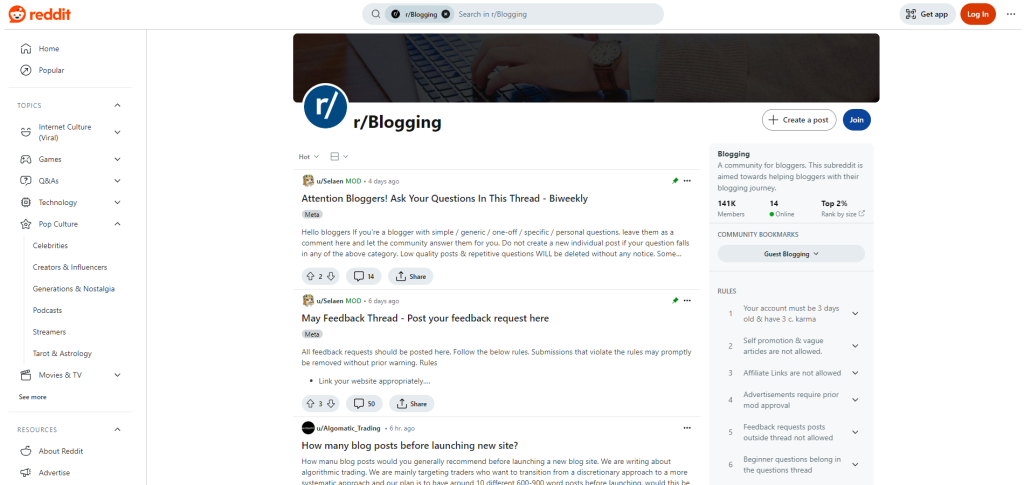
Reddit is a vast network of communities where people discuss a wide range of topics. You can explore specific subreddits related to your niche to see what questions people are asking and what topics are trending.
Observing the discussions and questions within these communities can help you generate blog content ideas that directly address the needs and interests of your readers.
Additionally, Reddit can be a goldmine for unique and fresh perspectives that you might not find in more mainstream sources. It’s in this platform where users often share personal stories or innovative ideas that haven’t yet reached a wider audience.
63. AllTop
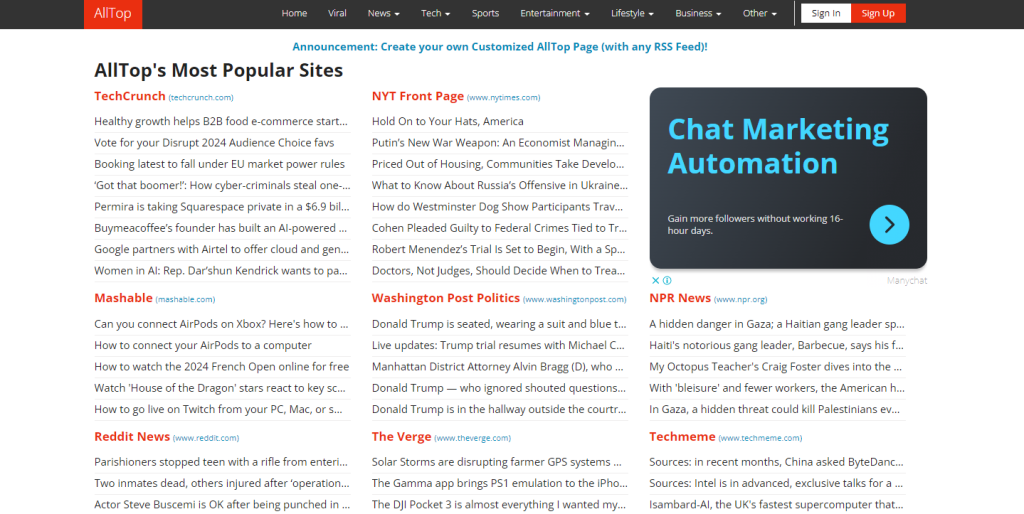
AllTop collects headlines from the best sites and blogs that focus on specific topics. Simply looking through these headlines can help you learn about the latest trends in your field.
This keeps you informed and can spark ideas for your blog posts that match what people are currently interested in.
AllTop also lets you explore topics outside your usual area, which is great for finding new inspiration.
64. Solutions to Your Audience’s Common Problems
Offering solutions to common problems faced by your readers can generate excellent blog content ideas.
For example, if your target readers are small business owners, you could write about typical financial issues they face and provide tips on budget management or tax planning.
To enhance your content, it’s crucial to understand the specific challenges your audience faces. You can interact with them on social media, conduct surveys, or check comments on your blog to learn about their needs and concerns.
65. BuzzSumo
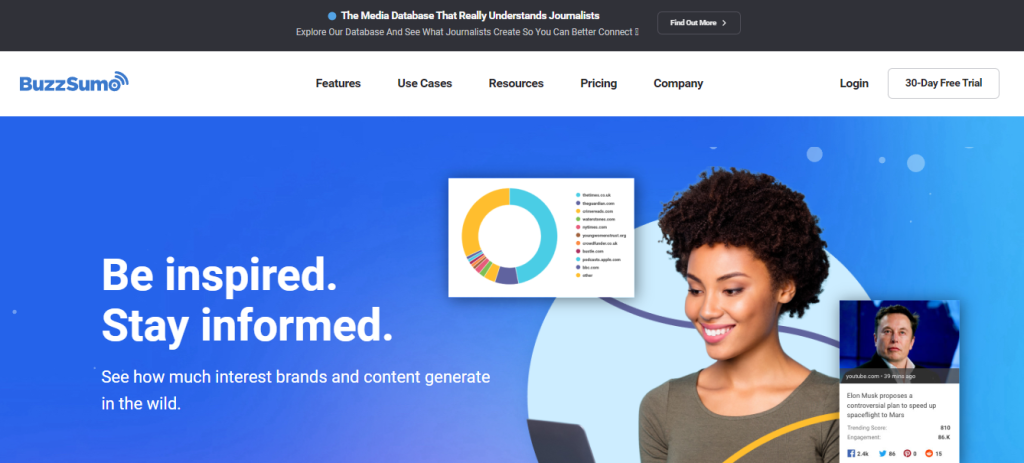
BuzzSumo helps you find content that has been popular on social media within any topic you choose.
By typing in keywords related to your area of interest, you can see which articles have been shared the most across various platforms. The tool also lets you see what influential people in your field are sharing and talking about.
Additionally, BuzzSumo has features that let you keep track of specific keywords and stay informed about ongoing trends or events related to your niche. This way, you can always be up-to-date and quickly respond to new developments with your content.
66. AI Writing Assistants
AI writing assistants like Jasper AI or Writesonic are great blog topic idea generators. By typing in a few keywords, these tools can offer a range of topics that are relevant, timely, and engaging.
For example, if you enter “remote work,” these AI tools might suggest topics such as “Best Practices for Managing Remote Teams” or “Top Tools for Remote Work Productivity.” This helps you quickly fill up your content calendar with topics that will likely interest your audience.
These AI tools use complex algorithms to analyze current trends and data from the internet, making sure their suggestions are fresh and on-point. This helps you stay ahead of the curve and provide your readers with content that’s cutting-edge and insightful.
67. Post an FAQ About Your Area of Expertise
FAQ content not only helps solve your readers’ problems but also attracts traffic through search engines, as people often search for specific questions online.
To make your FAQ more engaging, include real-life examples in your answers. This could be scenarios you’ve encountered in your work or typical situations faced by those in your industry.
Overall, FAQ content helps address common questions and challenges your audience faces, making your blog a go-to resource for solutions.
68. Share the Lessons You’ve Learned From a Failure or Success
Sharing lessons from your successes and failures is a great way to create blog content that resonates with your readers. It shows your human side by sharing your own challenges and offers valuable insights on dealing with the ups and downs in your life.
It’s also important to talk about what has worked for you. Feel free to share the strategies you’ve implemented that led to your successes.
Additionally, providing concrete, practical advice based on what you’ve experienced makes your posts more helpful. Whether you’re discussing a win or a setback, always offer clear guidance on what your readers should or shouldn’t do based on your experiences.
69. Discuss Changes in Industry Regulations or Laws
When regulations in your industry shift, individuals and businesses alike look for guidance and interpretation of these changes.
For instance, if new privacy laws are enacted that affect how data is collected and used, posting a blog that breaks down these laws for digital marketers can be extremely valuable. By doing so, you help your readers stay compliant and also position your blog as a trusted source of important updates.
You can also provide historical context to help your readers understand why these changes have been implemented and what effects they might have on the industry. Discuss previous regulations, the issues they presented, and how the new changes aim to address these problems.
70. Flip Through eBooks
If you’re falling short of blog content ideas, browse eBooks on platforms like Amazon or Google Books. Many eBooks in your niche will have detailed tables of contents where each chapter title can serve as a potential blog post topic.
Exploring eBooks also allows you to dive deep into subtopics that you might not have considered before. If you typically write about broad topics, the sub-chapters or specific sections in eBooks can provide niche angles that you can further develop as separate blogs.
Finally, using eBook chapter titles for inspiration can help you structure your posts in a logical and reader-friendly way. Each chapter in an eBook is usually structured to take the reader through a logical progression of ideas and information.
71. Utilize AnswerThePublic
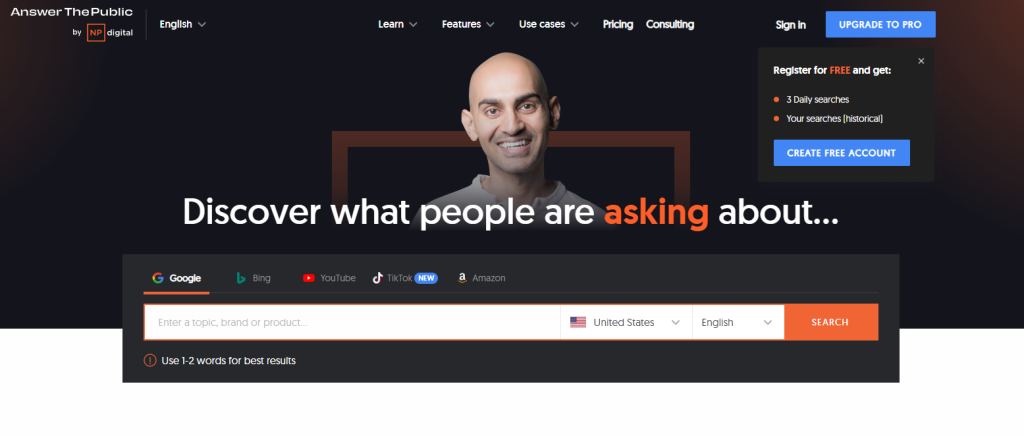
AnswerThePublic is an innovative tool that can help you discover a wealth of blog content ideas.
By entering a keyword into this platform, it generates a visual map of questions and prepositions related to your keyword based on real searches from the internet.
Using AnswerThePublic, you can pinpoint specific angles or subtopics that other bloggers haven’t extensively covered. The tool might suggest queries that lead to niche topics within broader subjects, which can set your content apart from the competition.
72. Incorporate Pinterest Trends
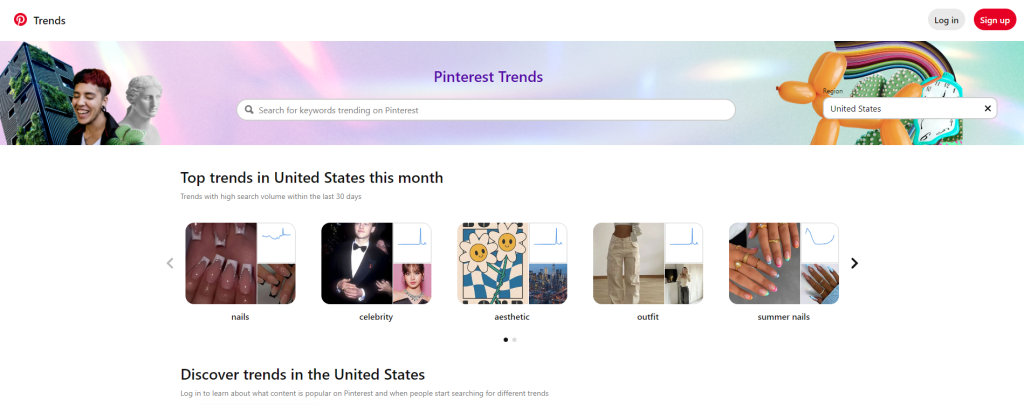
Pinterest works like a visual search engine where users pin content they find interesting and useful. You can identify current trends in this platform.
For instance, if your blog focuses on outdoor living, you might discover that rustic backyard designs are popular on Pinterest. This could inspire you to write posts like “Creating a Rustic Backyard Oasis” or “Top Rustic Design Elements for Outdoor Spaces”.
Another benefit of using Pinterest is that you can see which types of content get a lot of repins and likes. This helps you not just choose topics that will engage your readers, but also decide on the best format and style for your posts.
73. Create a Beginner’s Guide to Your Field
This type of guide can be a series of blog posts that help newcomers understand the basics of your industry.
Each section of your beginner’s guide should focus on a specific aspect, presented in a simple and accessible way. You could start with the very basics and gradually introduce more complex concepts along the way.
Incorporating visual aids such as infographics can also be helpful for your audience to easily digest the topics. Lastly, encourage feedback and questions from your readers and answer them immediately.
74. Podcast Insights
Globally, over 464 million people listen to podcasts. Popular podcasts in your niche are great sources of fresh information and trends, often including interviews with industry leaders. These insights can give you new blog content ideas that you can further develop.
For instance, you can write blog posts that add to the discussions in podcast episodes by summarizing key points, offering extra commentary, or going deeper into the topics.
Your blog posts can also create opportunities for cross-promotion by mentioning and linking to the podcasts you discuss.
75. Use Feedly to Follow Industry Blogs

Feedly is an RSS aggregator that compiles various blogs and publications, collecting all their latest updates in one organized place. It simplifies tracking trends in your industry without having to visit each blog or website separately.
With Feedly, you can quickly spot common themes that are popular in your field. Noticing these trends can motivate you to write blog posts about them.
Feedly also helps you identify gaps in available content. As you go through the articles, you may discover some areas are not thoroughly covered or some questions are not completely answered. You’ll then have a chance to fill these gaps by publishing your own content.
Final Thoughts
Creativity is often about expanding your horizons and exploring new sources of inspiration. When you feel stuck thinking of new blog content ideas, just apply the different ways we’ve mentioned in this article.
Now, I’d love to hear from you. Which of these strategies have you tried before, and how have they worked out? Are there any methods you’re excited to implement in your future content planning?
Let’s keep the conversation going. Comment below with your experiences and any additional tips you might have for fellow bloggers. Together, let’s keep our blogs lively and our readers captivated!

